Book Reviews
Book Review: The Anxious Generation
- Details
- Written by: Mark Short
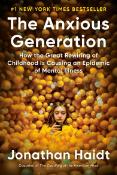 Jonathan Haidt: The Anxious Generation: How the Great Rewiring of Childhood Is Causing an Epidemic of Mental Illness
Jonathan Haidt: The Anxious Generation: How the Great Rewiring of Childhood Is Causing an Epidemic of Mental Illness
JONATHAN HAIDT
Penguin/Allen Lane 2024
REVIEWED BY MARK SHORT
American social psychologist Jonathan Haidt is best known for exploring the factors which contribute to the tensions and complexities of modern life. In The Righteous Mind he considered how moral disagreements arise not simply from contested facts but from diverse intuitions that go to the very nature of morality itself. In The Coddling of the American Mind (co-written with Greg Lukianoff) he lamented the rise of political polarisation and cancel in US universities.
His new book documents the alarming rise in mental illness amongst teenagers and young adults since 2010, especially females. Haidt contends that the blame lies with the deleterious impact of social media, with a secondary explanation being the continuation of overlyprotective parenting which has unnecessarily limited young people’s interaction with the physical world. “My central claim in this book is that these two trends – overprotection in the real world and underprotection in the virtual world – are the major reasons why children born after 1995 have become the anxious generation” p9 So why 2010? The internet and to some extent social media had been present before that date. However Haidt points to a number of innovations around that date which increased both the attractiveness of social media and its potential to be used as a means of social comparison. These included the introduction of the ‘like’ and ‘retweet’ buttons and the addition of a front-facing camera to smartphones, which is ideal for taking ‘selfies’. And why has the impact being worse on boys than girls?
Haidt points to girls’ higher vulnerability to social comparison and relational aggression, both of which are magnified by social media. For boys, the impacts tend to be different, and are seen in a tendency to withdraw from in-person engagement in favour of online gaming and pornography.
Since its release Haidt’s book has received much publicity and generally positive reviews. Where there has been pushback critics have argued that Haidt has confused correlation (increased use of social media coincided with deterioration in teen mental health) with causation (social media is responsible for the deterioration). Haidt is aware of this critique and responds by pointing to some experimental data and to the absence of any plausible explanation as to why mental health declined this much at this time.
There is of course a long history of blaming technological change for the problems of youth. It happened with Y and the internet; perhaps with the printing press as well. Nevertheless there is something about technology that simultaneously expresses our vocation as divine image bearers and our fallen-ness as sinful rebels. In his book The Life We’re Looking For Andy Crouch compares the promise of technology to the lure of alchemy – the aspiration for powers that would allow us to take the place of God. So the smartphone offers the promise of omnipresence and omniscience, but extracts a heavy price for this supposed privilege.
What is to be done about all this? Haidt makes a number of recommendations to legislators, parents and schools including raising the age of access to social media to 16 and developing schools that are both phone-free and conducive to unstructured unsupervised play. There is much wisdom here.
Of particular interest is a chapter called ‘Spiritual Elevation and Degradation’ where Haidt, who selfdescribes as a secular Jew, explores the potential of spiritual practices to elevate human well-being. These practices include shared embodied rituals, stillness and finding awe and nature. Haidt even references Pascal’s God-Shaped Hole, although he locates its origins in biological and cultural evolution rather than any divine design. “There is a hole, an emptiness in us all, that we strive to fill. If it doesn’t get filled with something noble and elevated, modern society will quickly pump it full of garbage. That has been true since the beginning of the age of mass media, but the garbage pump got 100 times more powerful in the 2010s.” p216
One must ask whether these spiritual practices and the promise they offer can ultimately be sustained in the absence of a commitment to divine design. Digital technology after all is thoroughly designed to enlist us as online consumers in the world of late modern capitalism.
Any resistance must begin with the conviction that we are created to know and be known rather than consume. As the Psalmist’s ancient wisdom reminds us “For you created my inmost being; you knit me together in my mother’s womb. I praise you because I am fearfully and wonderfully made; your works are wonderful, I know that full well.” (Psalm 139:13-14. NIV)
Bishop Mark Short is Bishop of Canberra and Goulburn.
Book:review: Salvific Intentionality in 1 Corinthians
- Details
- Written by: Chris Porter
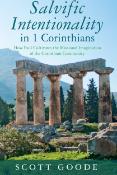 Salvific Intentionality in 1 Corinthians: How Paul Cultivates the Missional Imagination of the Corinthian Community
Salvific Intentionality in 1 Corinthians: How Paul Cultivates the Missional Imagination of the Corinthian Community
SCOTT GOODE author and publisher
REVIEWED BY CHRIS PORTER
It is often noted that for all the emphasis which the Apostle Paul places upon evangelism in the book of Acts and the narration of his own endeavours, he seems to not have the same expectations for the audiences of his epistles. In this short and accessible volume Scott Goode draws on this apparent “riddle” of evangelistic outreach in the Pauline epistles, and places it centre stage. Taking his cues from a close reading of 1 Corinthians he helpfully examines the missional hermeneutics within the letter, and ties these with the social identity of the Corinthian church under the broad banner of “salvific intentionality.” Here he reads salvation as directed towards “two distinct, yet related, directions,” (6) first, a vertical salvation “action of God towards humanity through the eschatological Christ event (7), and second, a horizontal aspect of “convey[ing] salvific influence towards one another and outsiders” (8). It is the interplay of these two aspects which Goode explores throughout the work.
In the first chapter Goode examines the challenge of moral formation within 1 Corinthians 5:1–8 and sets it within the context of the social identity—including theological aspects—of the Corinthian church. This chapter sets up the complexity of social and theological relations for the nascent church, and Goode provides a reasonably detailed and cogent examination of the challenges therein. While it could always be expanded, this foundational work sets him up well for the investigation at hand. The second chapter works from the social identity constructs at hand and examines the challenge inherent within mixed marriages in 7:12–16.
Here Goode argues that the believing partner may have significant salvific impact on an unbelieving partner through a “theological vision to strengthen their marital commitment” (36). But Goode is not blind to the challenges of imbalanced relationships, and cultural power imbalances inherent within first century patriarchal social settings. Rather, it is his attention to the mess present within these expressed social identities that demonstrates the compelling nature of the salvific intentionality he identifies as “worked out in the concrete social reality of first-century marriage, particularly for women” (43).
The third chapter, through the lengthy exposition on 8:1– 11:1, significantly expands on the prior vignette by throwing the doors open to the street, and considering how ethics of accommodation can generate missional opportunities for the believing community with their pagan neighbours. Goode carefully—and helpfully— navigates a fine line in his treatment of the “weak” and “strong” passages, taking seriously the nature of sectarian impulses towards fleeing from idol-food, while equally recognising Paul’s salvific commitment within his accommodation ethic that “seeks the salvific welfare of others” (56). Ultimately concluding that “the mission of the believing community cannot be limited to those of insider identity only. The mission of Christ has incorporated the Corinthians, although they were once outsiders” (69). The verticality of salvation has temporal impact in the horizontal space.
The fourth chapter considers the nature of worship within the community (14:20–25), and Paul’s assumption that outsiders may be present within the gatherings of the Corinthian church, and this should govern the activities of the church. From a detailed discussion of tongues in 1 Cor 14, against the background of Isaiah, Goode then considers how this would spill over into the socioreligious nature of worship settings, suggesting that speech modes in the community should be “directed towards the salvific welfare of outsiders” (97).
Finally, Goode turns his attention to the nature of missional identity and salvific intentionality “then and now” (98). Although the argument that church communities should be oriented towards a missional identity—even as missional communities—has been regularly made, Goode helpfully highlights the messiness of such a missional identity. This “untidy sociotheological profile” (99) that he reads throughout the first Corinthian epistle emphasises the wrestling of the Corinthian’s with their own Christian identity. It is this wrestling that Goode seeks to apply as a salve to the modern church, highlighting that the Corinthian social identity is not so different from our present embodiment. Of critical note here is his section on “soft difference in ecclesial boundaries” proposing that “Paul imagines the community in Corinth not simply as a place of purity but one of ‘spiritual formation’” (111). Here Goode aptly observes that this untidy reality challenges contemporary expressions of community, and his diagnosis of requiring a “socially open community” to “serve the salvific welfare of outsiders as well as insiders” (112-3) is a message that is sorely needed.
While Goode originally penned this work as an evolution of his MTh dissertation, he is to be well commended for his balance of academic rigour and pastoral readability. The book is firmly anchored within a scholarly foundation in social identity theory and missional hermeneutics yet is eminently readable and his insights spring easily from the page to the parish. This is recommended reading for anyone considering how to balance the challenge of an inward looking congregation for the edification of the comfortable with an outward salvifically intentional church on God’s mission field.
Rev Dr Chris Porter is Post-Doctoral Research Fellow at Trinity College Theological School.
Book Review: A History of Contemporary Praise and Worship:
- Details
- Written by: Rhys Bezzant
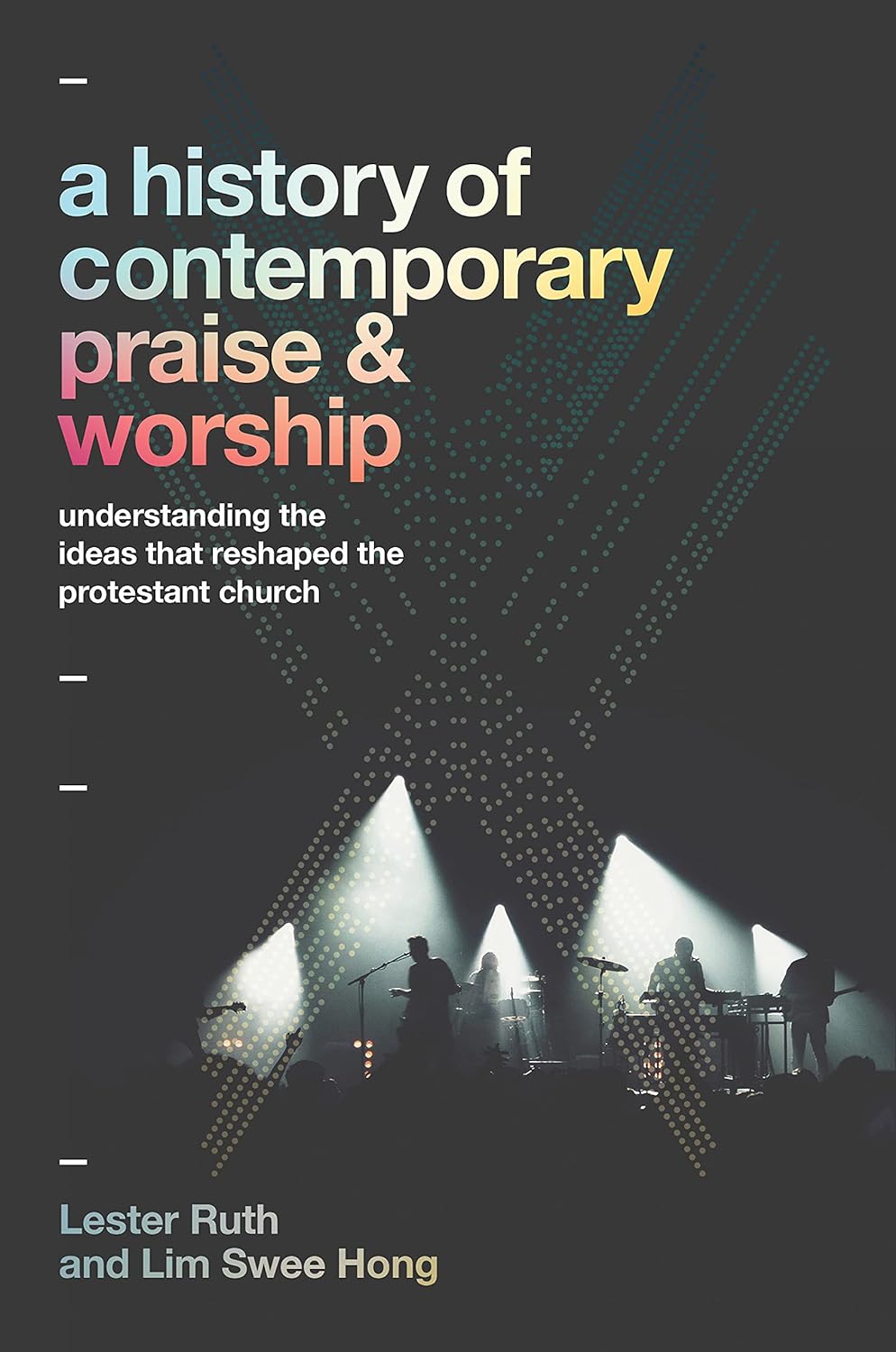 A History of Contemporary Praise and Worship: Understanding the Ideas that Reshaped the Protestant Church
A History of Contemporary Praise and Worship: Understanding the Ideas that Reshaped the Protestant Church
Lester Ruth and Lim Swee Hong
Grand Rapids: Baker Academic, 2021
Reading this book was like listening to the soundtrack of my earliest years as a Christian in the 1970s. It tells the story of the rise and development of contemporary praise and worship – some of it much earlier than the decade of my conversion! – with lots of quotations from songs, and references to their composers or publishers. But recounting this story is not just about listing choruses. In the hands of Ruth and Hong, we discover the social and the theological pressures which generated a twentieth-century revolution in both musical performance and song-writing. Their focus is on the United States, but their analysis holds good for Australia as well. The authors are professors in the field of Christian worship, so this book was the result of painstaking research – mainly through personal interviews – over many years. Contemporary Christian music has deep and complicated roots.
Read more: Book Review: A History of Contemporary Praise and Worship:
Book Review: Raising Tech-Healthy Humans
- Details
- Written by: Mark Simon
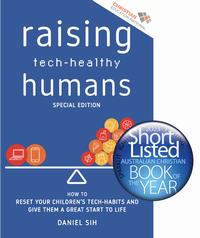 Raising Tech-Healthy Humans
Raising Tech-Healthy Humans
DANIEL SIH
Publish Central, 2023
REVIEWED BY MARK SIMON
Daniel Sih’s book for parents on shaping the technology habits of their children is just what it claims to be – helpful guidance for parents grappling with technology usage in the modern world. Every parent I know grapples with this area. Countless studies and articles highlight the potential dangers of excessive technology use by children (and adults), and Sih includes brief highlights of some potential harms. So the need for guidance in this area is clear, and Sih serves up a range of practical strategies underpinned by a foundational principle: parenting is about raising adults, not children. Therefore, “the role of a parent is to love, mentor and equip their children with the physical, emotional and psychological experiences they need to become adults.” (p.7) The strategies, perspectives and reflection questions he presents all contribute to a parent’s ability to raise tech-healthy adults, not just to minimise arguments about screen time.
A brief chapter on brain development and function highlights the reasons children so easily get addicted to technology (it engages the ‘downstairs brain’ – impulsive, emotional, fight/flight responses), and introduces a distinction between passive and interactive media. Passive media (such as TV and movies) has been around for decades, but more recently the proliferation of interactive media (such as video gaming and social media) encourages users to ‘lean-forward’ to engage with it, and overstimulates the downstairs brain, making it the more problematic form of technology for healthy brain development.
The core of the book is a framework based on the acronym ‘Starter’. Start with self; Take it slowly; Age appropriateness; Regular talk; Tech-healthy rhythms; Encourage adventures; Rely on others. For each of these principles, Sih combines research and insights with practical suggestions. The book is a short and easy read – perfect for time-poor, technology-saturated parents. It includes an appendix ‘100 Fun Non-Screen Activities to do with Kids’ – which reminds us all that the best things in life are free (teddy bear picnics, dress-ups, board games, exercising together, music, water fights…)
One interesting feature of the book as a short-listed finalist in the Australian Christian Book of the Year Awards is that it doesn’t present any explicitly Christian perspectives on technology usage in the family. There are plenty of implicit priorities that Christian families would affirm (such as mentoring, and mutual accountability), but the book got me wondering whether parenting in a Christian context adds any distinctive dynamics or goals into the mix.
The book is also best suited to parents of younger children and pre-teens, since it acknowledges the capacity to impact or radically change course with teenagers who have already become set in unhealthy habits requires a different approach. Despite these minor quibbles, there is much benefit to be gained by readers of Sih’s book (not just parents, but anyone who uses technology).
Rev Dr Mark Simon is Lecturer in New Testament and Research Associate at Ridley College, and minister of St Luke’s Vermont.
Book Review: How to Find Yourself: Why looking inwards is not the answer
- Details
- Written by: Karen Hale
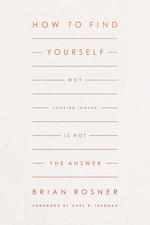 How to Find Yourself: Why looking inwards is not the answer
How to Find Yourself: Why looking inwards is not the answer
REV DR BRIAN S. ROSNER
Crossway, 2022
REVIEWED BY KAREN HALE
In his previous book Known by God A biblical theology of personal identity (2017) Brian Rosner (Principal, Ridley College) outlines a compelling argument for our identity being directly linked to being known by God. This latest book is a more accessible account exploring our identity and the question ‘Who am I? In the west the answer to this question is solved by looking inward. Rosner critiques this way of working out our identity and explores the many short comings of this view. He then seeks to provide an alternative of seeing our identity not primarily from within but by looking upwards to God. This view of looking inward is called expressive individualism. It stresses that if you want to know yourself and be happy then you need to look inward. Personal freedom is prized above all else and we should celebrate everyone’s quest for self-expression. The positives of this view are briefly outlined by Rosner before addressing a thoughtful critique.
The question of identity is not new but the markers that we use to express our identity have changed significantly over the last 50 years. Today we use fewer identity markers to describe who we are. Rosner challenges us to ask 5 important questions of expressive individualism. Does it help us deal with suffering, our pride, the poor and weak, injustice and our happiness. Rosner argues that this way of finding our identity is both fragile and faulty.
By looking at some ancient Biblical texts Brian Rosner explores how we have seen the fragility and faults of humans in seeking to look within to define their identity. In the story of Adam and Eve we find humans thinking they can work out their own path and that they know best. This has terrible consequences, and it is only in looking at Jesus that we finally see a human who is tempted to trust themselves and yet trusts God. Even though today we are told to look inward, Rosner rightly identifies that this is not the full view. We have never been more obsessed with looking around us. Through social media, in particular, we compare and contrast ourselves to everyone else. Rosner suggests that the missing piece we are yearning for is looking upwards. True identity is beyond us. He suggests that we are a social story telling beings that want to worship. From when we are babies to the end of life we live in society and are shaped by all the relationships that we have. To know yourself you need to be known. Known by others but more importantly known by God.
Rosner contends that today the narrative that we inhabit is secular materialism. Historically this has come from the enlightenment, a story of progress, freedom from the dark past. We then had the sexual revolution, a story of freedom for pleasure. Now we see the story of consumerism, we are what we buy. This seems to tap into financial security and enjoyment. All these stories have failed us, as they do not take seriously the impact of personal freedoms nor the capacity of humans to do harm. There has been some acknowledgement of these pitfalls and so another story has emerged that highlights social justice. This is a strong voice at present. It is a very black and white view of social justice and fails to take into account the complexity of many issues.
In contrast to secular materialism Brian Rosner offers a positive way forward. We are part of a bigger story, God’s story, which is particularly seen in Jesus’ story. He then asks the same questions of this view. Can this help us with suffering, our pride, the poor and weak, injustice and happiness. We don’t just believe God’s story we inhabit this story.
The final part of the book looks at how to live within this story. It is a paradox that you are told to lose yourself to be able to find yourself. We don’t look in, but to Christ to truly find ourselves. We are encouraged to trust in Jesus and to immerse ourselves in his story, a story with love at the centre.
I highly commend this book as it seeks to help us engage with the complex issue of our identity. In a world that currently has fewer identity markers and yet espouses greater freedom that does not seem to deliver. Identity crisis seems to be occurring at every age today from children to the elderly. The story we have been sold of expressive individualism doesn’t seem to be delivering on the freedoms it seems to promise. Instead, people are more confused than ever. Brian Rosner provides a compelling case for seeing our identity within God’s story. The story of the good news of Jesus. It is a bigger story beyond ourselves but one in which we get to live. We are part of this narrative, and it is a story that is rooted in love. To be truly known and loved by God gives us an identity that is able to withstand the complexities of life.
Karen Hale is Teacher of Religious Education and Science at Ivanhoe Girls’ Grammar School.
